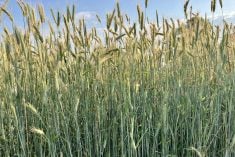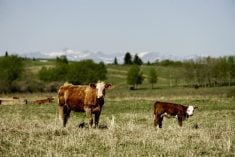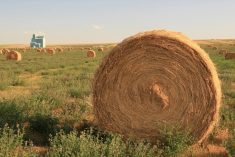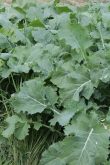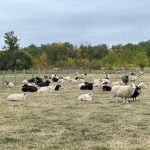Fuel and fertilizer prices are rising daily, making the decision harder on whether producers should reseed pasture. “That full break and reseed, even prior to this year, was the most expensive way to go,” says forage and grazing specialist Christine O’Reilly. But there are more options than cultivating and reseeding with a drill.
“Reseeding tends to be appropriate when you start looking at the species of plants in your pasture,” says O’Reilly, who is with the Ontario Ministry of Agriculture, Food, and Rural Affairs. Not having many productive forage species or several bare ground patches (which offer an opportunity for weed encroachment) are two indicators that reseeding or over-seeding would be beneficial.
“You will have plants that you want in your pasture, not the plants you don’t want,” O’Reilly says.
Read Also
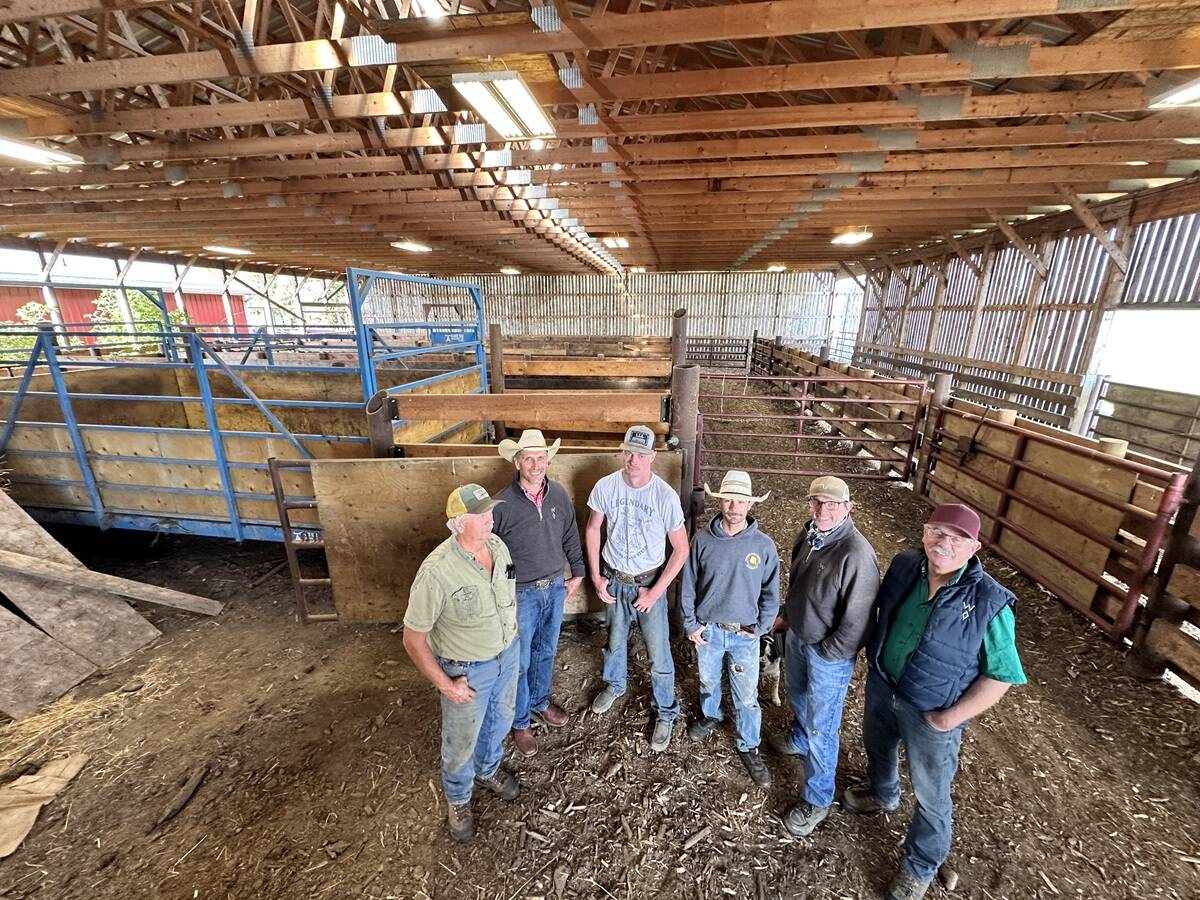
Farm families work together to graze cropland with cattle in the fall
These Alberta farm families have separate operations, but work together to manage their land
Cattle producer Arron Nerbas from Russell, Manitoba looks for all the above indicators when it comes to determining whether or not to reseed pasture, plus lack of biodiversity within the stand.
“We encourage a lot of diversity within our forage stands,” he says. This goes for legumes as well, he adds, for nitrogen fixation, biodiversity and feed quality.
Before seeding, O’Reilly recommends doing a soil test, especially this year, so you aren’t applying anything you don’t need. “It’s extra complicated this year,” she says, “because fertilizer is expensive, and hay is expensive. That is something people must evaluate for their own operation too.”
Frost seeding
Getting some new seed into the ground can be very simple, eliminating the need for a cultivator and drill.
Frost seeding is one option, O’Reilly suggests. It involves a quad or tractor with a broadcast seed applicator and applying seed to the pasture. “This method works best when there are bare spots the size of a loonie,” she says.
It’s a seeding method Nerbas has tried, with a quad, “just broadcasting a mixture of legumes and grasses.” He broadcasted the seed mixture in May, after the snow melted. “It was adding some seed to the seedbank.”
To properly frost seed, the snow should be gone, but the frost in the ground should be able to hold the equipment. “If you’re making ruts, you’re too late.”
Frost seeding works by using the ground’s natural freeze-thaw cycle to work the seed gently into the ground, creating the proper seed-to-soil contact that the seed needs to properly germinate.
The advantage of frost seeding is that it is usually very fast and inexpensive to apply the seed. However, frost seeding does have some disadvantages.
“It can be very hard to time it. Sometimes the only window you get is between three and four in the morning,” O’Reilly says. “And it also doesn’t work well on large seeds.”
While most legumes such as clover will frost seed very nicely, grasses usually don’t frost seed very well. “Their seeds are just too big. We don’t get that seed-to-soil contact we need for a consistent catch,” she says.
Using a small seed allows for the freeze-thaw cycle to work that seed shallowly into the ground, whereas a bigger-sized seed would need to be worked deeper into the ground. While some have had success with frost seeding grasses, O’Reilly says, it’s not as consistent as it is with frost seeding legumes.
No-till drill
Another option is using a no-till drill in the spring when the ground is fit to hold equipment. To prepare the pasture, O’Reilly suggests “mowing or grazing the pasture really close to reduce competition from the established stand.” Or if the land is unproductive, a herbicide burn-down could be used first. She stresses that for the no-till drill method to work correctly, reducing competition pre-seeding needs to happen.
“Even if you do want to keep most of the plants, you need to mow or graze it, just to knock them back so there is light getting through the canopy.” Later, another pass mowing, or grazing might need to take place while the new plants are establishing. “Sometimes a mowing or light grazing later on can help encourage the grasses to tiller, keep weeds down, and encourage a thicker stand.”
The no-till drill works with seeding both grasses and legumes, if you have the correct seed boxes on the drill. “Calibration and down-pressure are very important,” O’Reilly says. Having the correct pressure and calibration setting on the drill are important for correct seed-to-soil contact. However, sourcing the use of a no-till drill can be problematic in some areas, she says. Using this method does require two passes — one to prep and one to seed—so there are a bit more input costs involved also.
Use the cows
A third and least expensive option is feeding legume seed to cattle in loose mineral. It works by having the cattle lick the salt and seed mixture. Because the rumen doesn’t break down the seed coat, the seed is then expelled in the manure. It’s important to use untreated seed only with this method, O’Reilly stresses.
“It is the least expensive option, but it takes the longest to see the results. With this method you gradually see the legumes come in over several years,” says O’Reilly.
How evenly the legume seed is dispersed is dependent on the grazing management of the pasture. “Where are the cattle spending their time? Where is the manure going?”
In a rotational-grazed system, where the places the cattle spend their time are managed, they distribute the seed more evenly than in continually grazed systems, where the cattle are allowed to hang out in specific areas. The legume seed can be concentrated in areas in this situation, and it doesn’t get distributed across the entire pasture. O’Reilly admits the mineral seeding can be a bit “hit and miss” but it is the least expensive and requires minimal labour.
Nerbas has used the mineral seeding option as well. “It does work well to a certain extent, but it’s slow improvement and it’s not consistent in coverage — you get clusters, but it contributes (to the biodiversity),” he says.
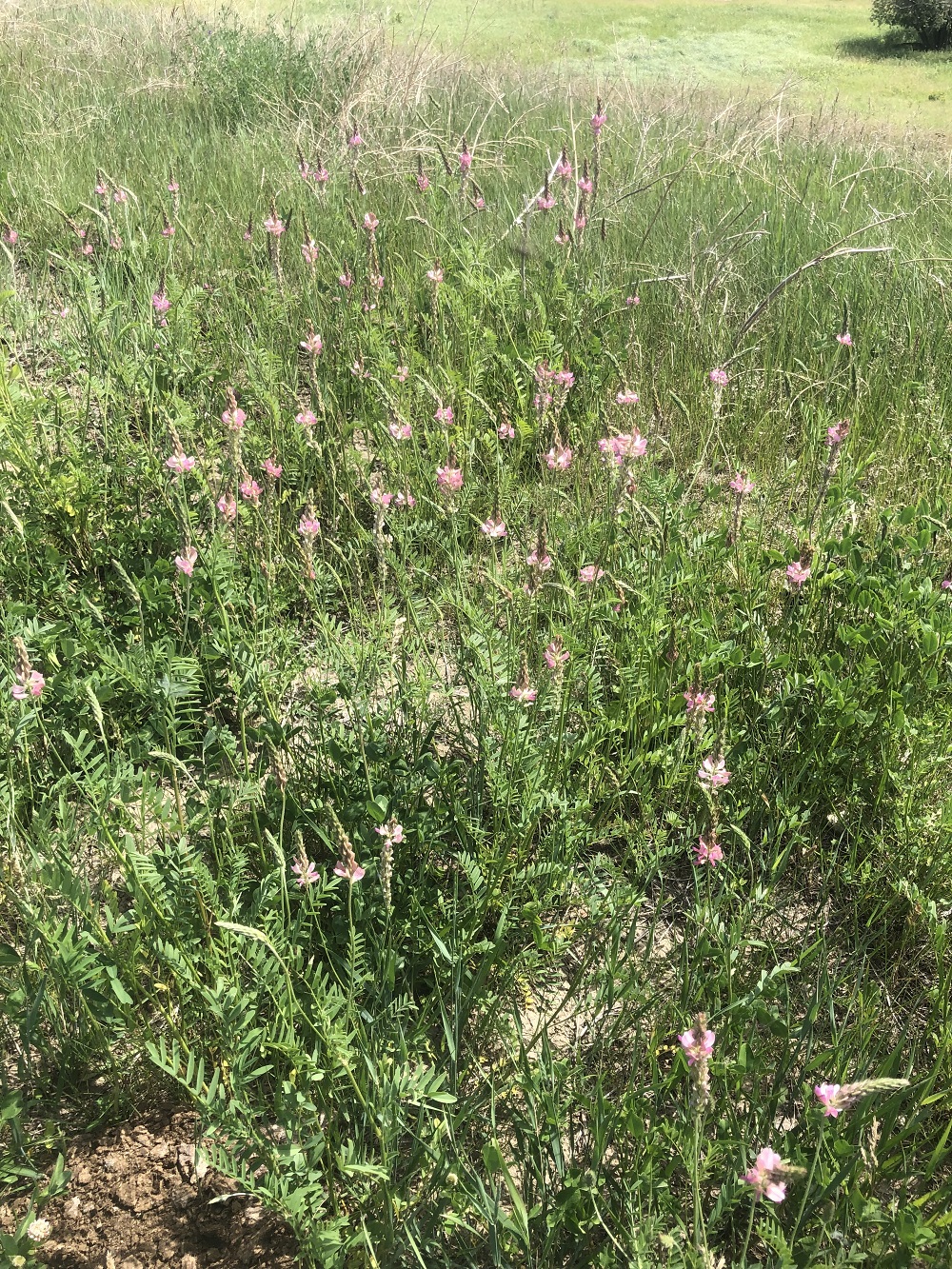
From the sky
Nerbas has also tried something most wouldn’t think of when it comes to pasture reseeding — he took to the air.
“We contracted an aerial applicator to put on (the seed). They use the same spreader they use for canola, calibrate it for the forage, and they’ll put on whatever rate you want.”
One pro of using this method is it’s extremely fast, “They can do five-hundred acres in a day.” It’s also very economical, with the rates being the same as most aerial applications.
After the seed is applied, Nerbas uses the cattle to work the seed into the ground. “We’ve done that (flown on some seed) in some of our bottom-land using just alfalfa, and it worked extremely well,” he says.
There were a few factors in Nerbas’ favour, such as good soil fertility and timely rains, that helped with the catch. “It did take two to three years because there was quite a bit of competition, but after three years it looks like a hayfield.”
He has also tried this on some of their top-land which doesn’t have the quality of soil as the bottom-lands. “We knew we weren’t going to get the same results. And it’s worked out pretty good as well.”
Patience is key, Nerbas says, especially when it comes to broadcasting or aerial application. “It takes a long time to establish, but I think it’s worth it. Sometimes you don’t see the results until years after.”
“Regardless of with method you use, we want to keep livestock off that new seeding until those young plants have developed enough of a root system that grazing livestock won’t rip out the young plants,” O’Reilly says. The exact timing is very dependent on where you are and the weather, she adds.
When deciding on a seed blend to use for either method, in B.C. and the Prairies, use the Forage U-Pick tool available at upick.beefresearch.ca or contact your local forage extension person.
Nerbas believes in being in tune with natural systems instead of relying on external inputs. “It factors into our decisions on how we manage and rejuvenate some of our forage stands.”



